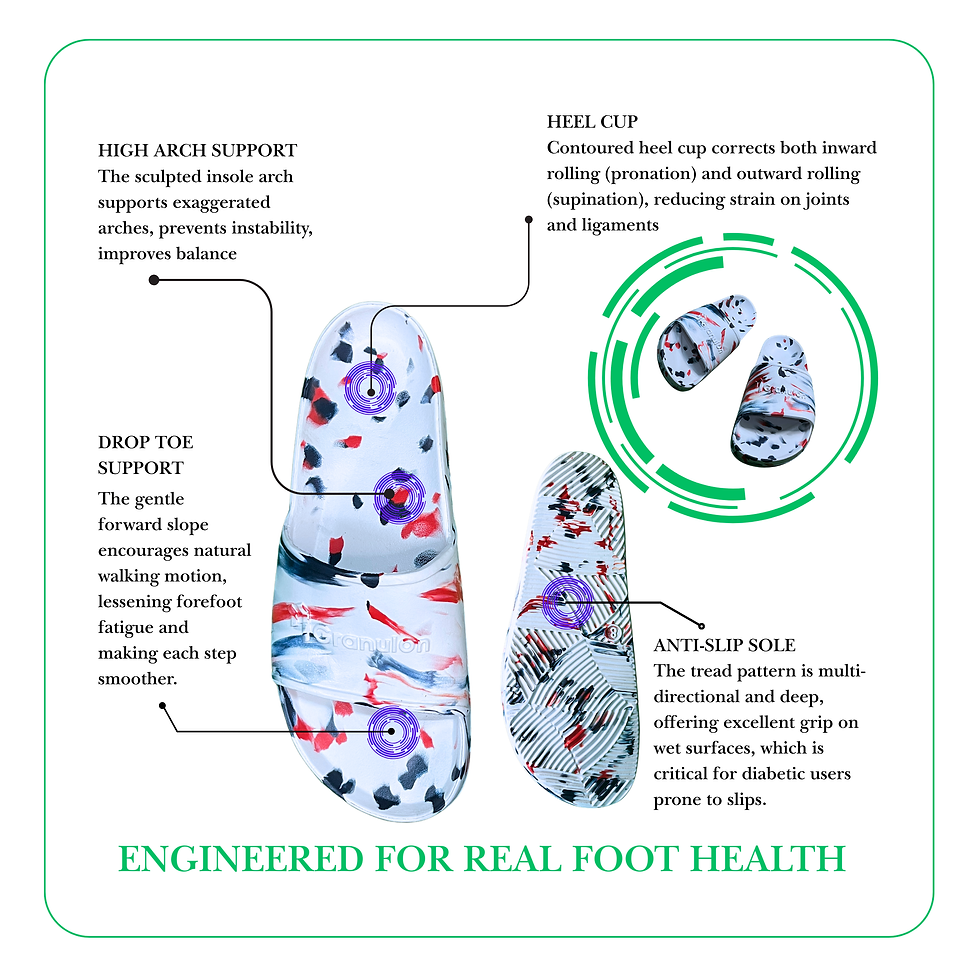What Are the Materials Used in Shoe Manufacturing?
- Aria

- Dec 21, 2024
- 3 min read
Shoes are a staple of daily life, combining functionality, style, and comfort. But have you ever wondered what goes into making the perfect pair of shoes? Footwear manufacturing involves a wide range of materials, each chosen for its specific properties and suitability for different parts of a shoe. From durable leather to innovative sustainable options, here’s an overview of the materials used and their unique benefits.
1. Natural Materials
Leather: One of the most traditional materials, leather is prized for its durability, breathability, and ability to mold to the foot. It’s commonly used for uppers, linings, and insoles.

Cotton Canvas: Lightweight and breathable, cotton canvas is often used for casual footwear, offering a relaxed yet sturdy feel.
Cork: This eco-friendly material is used in midsoles and insoles, providing natural cushioning and support.
2. Synthetic Materials
Synthetic Leather (PU Leather): A cost-effective alternative to genuine leather, this material is water-resistant, durable, and widely used in uppers and linings.
EVA (Ethylene Vinyl Acetate): Known for its lightweight and shock-absorbing properties, EVA is a go-to material for midsoles and outsoles in athletic shoes.
TPU (Thermoplastic Polyurethane): This abrasion-resistant material is found in outsoles and reinforcements, making shoes more durable and flexible.
3. Fabrics
Mesh: Highly breathable and lightweight, mesh is ideal for uppers and linings in sports and casual footwear.
Knit Fabrics: Used in modern athletic shoes, knit fabrics offer flexibility and a sock-like fit.
4. Rubber-Based Materials
Natural Rubber: A common choice for outsoles, natural rubber provides excellent grip, flexibility, and shock absorption.
Vulcanized Rubber: More durable than natural rubber, it’s often used in sneakers for enhanced performance.
5. Sustainable and Innovative Materials
Recycled Plastic (PET): Derived from waste like plastic bottles, this eco-friendly material is used for uppers and linings, reducing environmental impact.
Piñatex (Pineapple Leather): A sustainable, plant-based alternative to leather, used in uppers and linings.
Algae Foam: Found in midsoles, algae foam offers eco-friendly cushioning while combating water pollution.
6. Specialty Materials
Memory Foam: Used in insoles, this material adapts to the foot shape for unmatched comfort.
Carbon Fiber: Found in high-performance athletic shoes, carbon fiber adds lightweight strength and stability.
Table: Materials Used in Shoe Manufacturing
Material | Part of Shoe | Benefits |
Leather | Uppers, Linings, Insoles | Durable, breathable, molds to foot shape |
Cotton Canvas | Uppers | Lightweight, breathable, cost-effective |
Synthetic Leather (PU Leather) | Uppers, Linings | Cost-effective, water-resistant, durable |
Mesh | Uppers, Linings | Flexible, breathable, lightweight |
Natural Rubber | Outsoles | Flexible, excellent grip, shock absorption |
EVA (Ethylene Vinyl Acetate) | Midsoles, Outsoles | Lightweight, cushioning, shock absorption |
Memory Foam | Insoles | Comfortable, adapts to foot shape |
Cork | Midsoles, Insoles | Eco-friendly, supportive, lightweight |
TPU (Thermoplastic Polyurethane) | Outsoles, Reinforcements | Abrasion-resistant, durable, flexible |
Piñatex (Pineapple Leather) | Uppers, Linings | Sustainable, lightweight, durable |
Recycled Plastic (PET) | Uppers, Linings | Eco-friendly, reduces waste, lightweight |
Algae Foam | Midsoles | Eco-friendly, cushioning, lightweight |
Why Material Selection Matters
The choice of materials impacts not only the comfort and durability of shoes but also their environmental footprint. As consumers demand more sustainable and ethical products, footwear manufacturers are increasingly exploring innovative materials that balance performance and eco-friendliness.
Final Thoughts
Understanding the materials used in shoe manufacturing highlights the craftsmanship and innovation that go into every pair. From traditional leather to futuristic algae foam, each material serves a purpose, ensuring that shoes are functional, stylish, and, increasingly, sustainable. By choosing the right materials, manufacturers can meet the needs of diverse consumers while contributing to a greener future.
Would you like to explore more about sustainable materials or advancements in footwear technology? Let us know your thoughts!



Comments